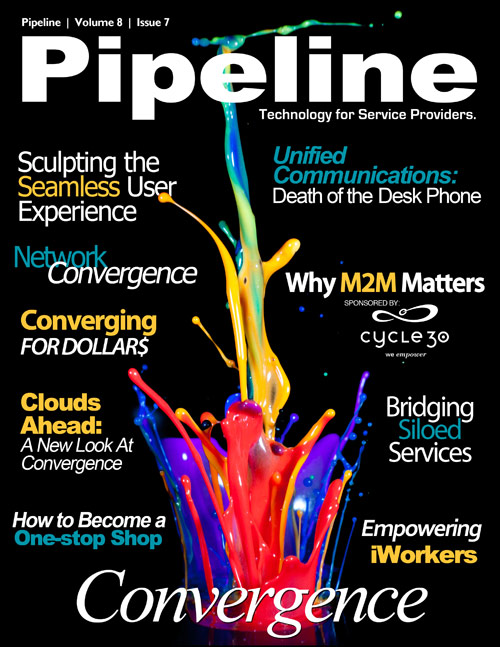More recently in France, in mid-November, Alcatel-Lucent launched an all-IP transformation at Bouygues Telecom. Stephen Carter, Alcatel-Lucent's president for EMEA, noted providers are, "moving aggressively to transform their networks to IP in order to deliver exciting new services and manage costs."
Cablecos are also beginning to turn the corner on all-IP. At the recent Cable-Tec Expo, Motorola's Patrick Wright-Riley spoke about the transition to IP and the promise of a converged network for the cable industry. "MPEG is a very efficient way of delivering video, but IP allows you to align voice, video and data down the same pathways," said Wright-Riley. "Multi-screen is the driver for IP. IP is kind of forced upon us as we start seeing more and more video on the Internet, user-generated content, and over-the-top VOD players."
Convergence: It's Not Just IP
While IP is the future of telecommunications, people are clamoring for innovative services now. No one is content to wait three years for a killer app. As we've said before, the end-user doesn't care about the network, she cares about the service and experience. The end-user wants to enjoy service across multiple platforms, so whether transport networks remain in silos, or are fully converged, they must be, "increasingly agnostic of the access technology," says Monica Paolini, president, Senza Fili Consulting. "In wireless, the transition is still ongoing," Paolini continued.
This is where the convergence discusssion gets interesting.
Communications service providers are more than just networks. They possess several very unique characteristics that can be used to their advantage, regardless of how far along the IP-migration path they've walked:
- The ability to control and monitor quality across the networking
- Multiple viable legacy transport networks
- Voluminous customer data
- Partnerships with devices manufacturers and content providers
Converging the value in these four areas to create, launch, deliver, and manage innovative services is absolutely possible. In their legacy networks, carriers possess transport that is still very viable, and can be re-purposed for M2M communications, backhaul, and reliable emergency communication service (something all-IP can't claim during a power outage). Converging the customer data from fixed, wireline, and mobile networks and applying contextually aware analytics across the spectrum can uncover myriad new business cases.
Service providers can also leverage their wealth of customer data to fine-tune and personalize experiences in ways that OTT players simply cannot. Even before all-IP is here, CSPs can converge strengths in network monitoring and quality assurance with acute customer profile data and content partnerships to create new quality- and service-specific offerings, or value-charging propositions. Carriers can join hands with OTT video-providers to deliver better quality of experience at a premium to customers.
The Game Must Change
Imagine a future where marketing from communications service providers focused on customer experience, and not network capability. It's something other service industries figured out a long time ago. As Chun-Ling Woon, vice president Business Development, Conceptwave, told Pipeline in our May Issue, "Battle of the Brands" article: "Networks are like armpits: everyone has them and they all stink. What's so interesting about your network? Does it stink slightly less than the other guy's?"
What if a carrier advertised the service capability of their converged networks—what if they highlighted a service that enabled you to watch content from all of your favorite (read: OTT) video providers anywhere with high quality, text message your spouse in a connected car, purchase the latest apps from any app store, and use a low-cost, reliable landline in an emergency all from one account, with one bill?
How much cooler is that than lightning bolts and speed claims? And, I might add, "cool" sells.









